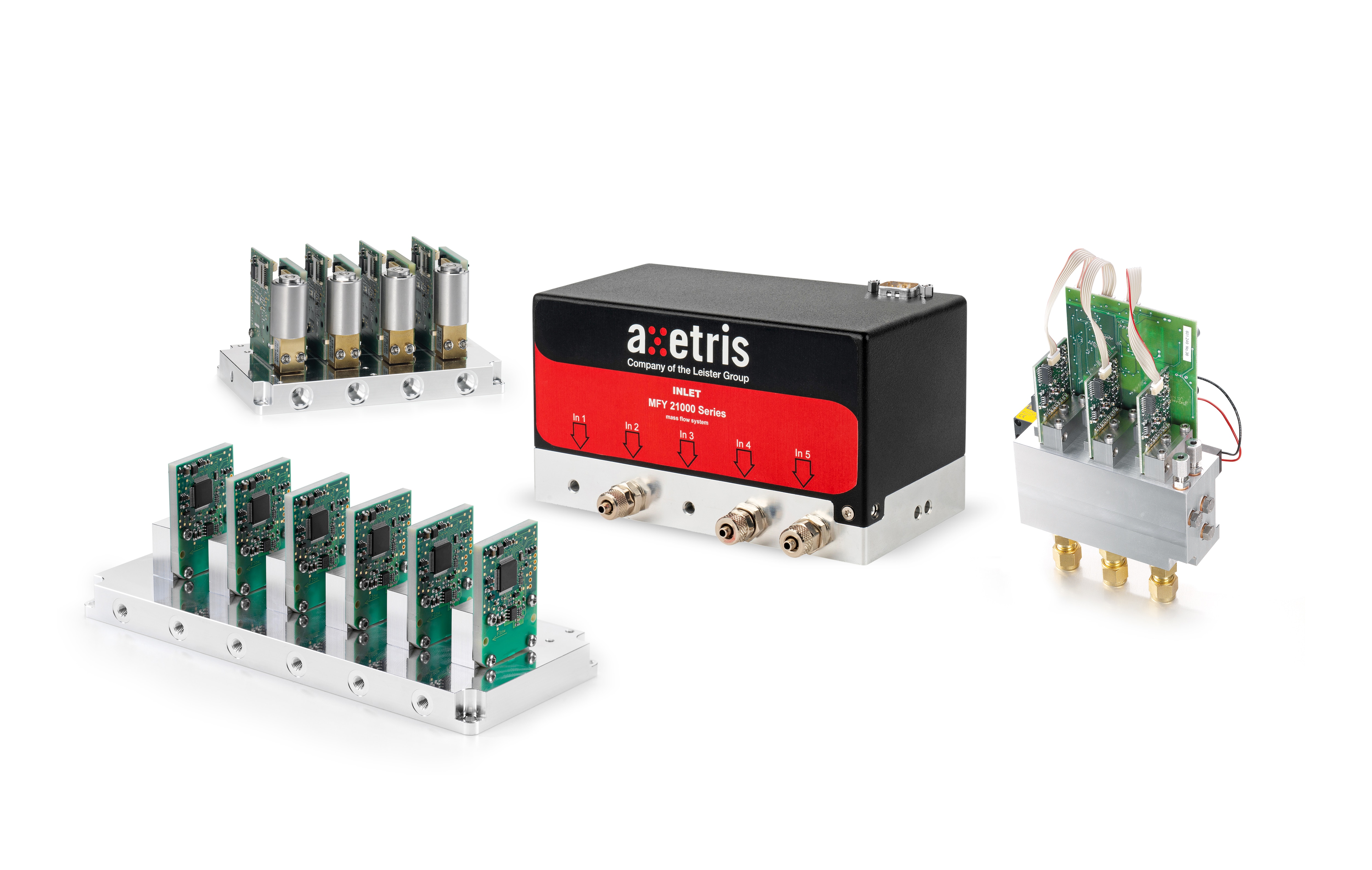Gas flow measurement using the thermal principle

If a substance is in a gaseous state, the individual particles are in motion. By compressing the volume, these particles come closer together, more frequent collisions occur and the pressure increases.

Axetris mass flow devices are based on the principle of thermal flow technology. We develop the platinum-based MEMS chip technology that enables the measurement of non-aggressive or corrosive gases such as air, nitrogen (N2), argon (Ar) or helium (He). The multi-gas option allows for flexible switching between gases without changing the device. Compared to others, this technology is particularly convincing due to its high measurement accuracy and fast response to flow changes. Thanks to the very high dynamic range of over 1000:1, flow rates can be flexibly realized as required.